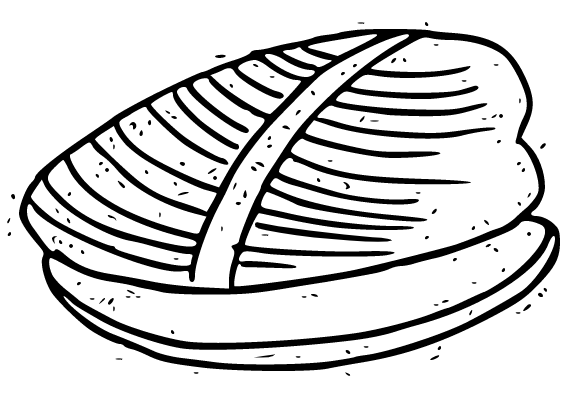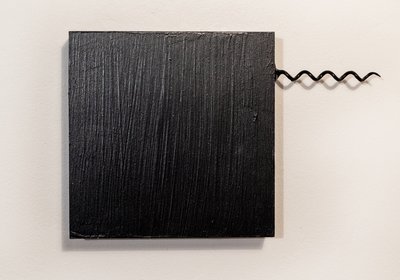-

-
The Discerning Mollusk's Guide to Arts & Ideas
-


Dada? Is That You?
Anachronism, Anacreon’s contribution to the fourth dimension, explains nothing. Barely worth mentioning. Thus does a Dada set the mood in timeless fashion. As The War to End All Wars blew young men to gobbets, Zürich’s Cabaret Voltaire served as Dada’s kindergarten. Movers and movements have since come and gone. Yet one calls himself a Dada, again, in timeless fashion. One doesn’t call oneself a Pre-Raphaelite. “Is the man insane?” I hope not. (Perhaps on weekends.) It’s a yet further remove from the Six Dynasties poets scattered among near-vertical Chinese hills. (I grow vertiginous contemplating their sky-high state.) Should I call myself a Futurist? Perhaps in term of proximity—I’m almost old enough—though Marinetti’s fascist enthusiasms give one pause. (Marinetti’s Cane Corso gives one four paws. Mussolini’s feet more resembled cloven hooves.)
Surrealism clings to relevance. People still fashion themselves Surrealists. I suppose one could call oneself a Surrealist but one persists in one’s Dada devotions. Resemblances notwithstanding, Surrealism inevitably brings Andre Breton to mind, the movement’s panjandrum. Breton was a serious man. Anyone in his circle who tampered with the party line found himself very much outside the circle. (See what I did there? A line within a circle? I’m also a Neo-Plasticist!) As went Breton, so went Surrealism. Little room for shits and giggles. As one is given to addressing inanimate objects—one greets his clothing every morning in hope of a more flattering look—one thinks of Breton as a living presence, thus a parent to thwart. We Dadas are like that.
Also. Und so weiter. Plus. Surrealism drew its fuel from Freud. We think less of Freud these days, and too, of Freud’s fogbound playground, the subconscious. Dada at its purest, emerging from its primal slime, is contrarian, absurdist in fact—a middle finger, a whup upside the head. The Great War being what it was, the conscientiously objecting Dadas declared themselves anti-art, in keeping with their rejection of a High Culture whose dainty veneer could not contain the rot. In order best to bray at the world into which they were thrust, they crafted a nihilist armature they called anti-art. By backdoor definition, art by any name or intent is art. Contrarians, yes, Ubu-esque, yes, vandals, yes, but aesthetes malgré eux. The irony! The absurdity! (And that classy bit of French just now!)
The immediately preceding would have been a lovely way to end this yawp. However, the imp of perversity requires me to mention’Pataphysics. ’Pataphysics (not ’Pastaphysics, a typo swiftly corrected) corrected) corrected) is that joyful leap beyond metaphysics, which is to say, the limitless universe of imaginary solutions. But I have no questions requiring solutions. I prefer little mysteries.
Tzanck Check
My introduction to Marcel Duchamp’s Cabinet of Wonders might have begun in a remaindered book store on Manhattan’s West 8th Street—Marlboro. You must forgive an unreliable memory. It was long ago. (Marlboro was consumed by Barnes & Noble, as I am by age.) On one of Marlboro’s many tables lay a stack entitled Marcel Duchamp, published in 1959 by a benevolent god’s nod to the avant-garde, Grove Press, in a translation by George Heard Hamilton. I signed and dated my copy, 1961. (Do you write your name in your books? I gave it up. Nobody cares.) The Grove edition appeared, close to simultaneously, with Robert Lebel’s limited French edition of 137 copies in 1959. Like the original, the Grove’s Lebel includes essays by Duchamp, André Breton and H.P. Roché. Breton’s contribution, “Lighthouse of the Bride,” is characteristically impenetrable.
In 1964 I acquired a (signed!) copy of The Bride Stripped Bare by Her Bachelors, Even, an elaborately exhausting Dada disquisition on the commensurately elaborate work on glass Duchamp worked on from 1915 to 1923. You’d be better served Googling than trying to understand any description of mine. Enough to say that the The Bride’s impact remains undiminished. It’s an enigmatic treasure.
Our topic is the readymade (more or less) and how it blew a mind. (If you take “blew” as fellation you’d not be far off the mark, in, of course, the term’s spiritual sense.) The year of the readymade’s inception is given as 1913: Duchamp mounted a bicycle wheel (hub, spokes and rim—no tire) atop a stool. The stool’s function is cancelled by a bicycle wheel’s purpose, likewise cancelled—a salute to negation! In a similar spirit of mirthful negativity, in 1915 Duchamp entitled a snow shovel “In Advance of the Broken Arm.” Something to look forward to. On the subject of looking, window glass allows us to view the out-of-doors in indoor comfort. In 1920, Duchamp had a woodworker create a miniature French window the panes of which he covered in black leather and entitled “Fresh Widow.” Wordplay and erotics were never far from Duchamp’s interests. My special pleasure is dated 1917: Fountain, an upside-down and therefore useless urinal he signed R. Mutt and dated—a somewhat found object somewhat adjusted and astonishing and droll, or, to the less sympathetic, the work of a madman, an anarchist, a pervert, a fool. I recommend Googling, as I do for Tzanck Check, an enduring delight. The dentist for whom it was created was savvy enough to keep it as an objet d’art. Made out as it is to The Teeth’s Loan & Trust Company, Consolidated, cashing it would have proven difficult.
I cannot aspire to Duchamp’s signature insouciance. Idolatry interferes. Yet, as much as I admire the man’s affect and aesthetic, in their liminal way, two of Man Ray’s adjusted readymades have influenced me profoundly. In 1921, he glued a vertical line of nails to the sole plate of an old-fashioned flatiron and called it Cadeau (Gift): striking in its inutility (some gift!), sinister in its promise of damage, amusingly absurd, and, need one say, unique. Not likely to fly off the shelves. The other is called Indestructible Object (or Object to Be Destroyed), 1923: a wood-encased metronome to the shaft of which he affixed a photograph of the beautiful Lee Miller’s soulful eye. (Miller, a photographer, was his assistant and lover.) An earlier version featured an eye cut out of what might have been a late-19th century fashion magazine.
Remaining with bedazzlement, we’ve Max Ernst’s collages: old periodicals, illustrated fiction, technical and medical manuals provided most of the material for his collage masterpieces: La femme 100 têtes (The Hundred Headless Woman, 1929), Rêve d’une petite fille qui voulut entre au Carmel (A Little Girl Dreams of Taking the Veil, 1930), and Une semaine de bonté (A Week of Kindness, 1934), this last quite possibly the precursor for today’s graphic novel. The work I’ve touched on is delightful in its disturbances, ergo un petit peu Dada, un petit peu Surrealist, or maybe even un petit peu ’pataphysical—though, surely, we are less about imaginary solutions than mind-expanding excursions. Duchamp identified with no one or anything, which, for me, establishes his place as quite the perfect Dada. Man Ray and Max Ernst began as Dadas. This is not something snakes shed like a skin.
My need to label, perhaps to establish a family tree—an impoverished nephew many times removed—reveals a touch of OCD with features of grandiosity.
These manifestos, and the associated image, are drawn from Silverton's forthcoming collection of poetry and art, New and Used Poems and Objects, with photographs by Kevin Johnson.

Mike Silverton is most recently the author of Anvil on a Shoestring (2022), Trios (2023), and Yoga for Pickpockets (2024).
His poetry appeared in the late '60s and early '70s in Harper’s, The Nation, Wormwood Review, Poetry Now, some/thing, Chelsea, Prairie Schooner, Elephant and other publications he may have (and most likely) mislaid. William Cole included Mike’s poems in four anthologies: Eight Lines and Under, Macmillan, 1967; Pith and Vinegar, Simon and Schuster, 1969; Poetry Brief, Macmillan, 1971; and Poems One Line & Longer, Grossman, 1973.
As a culture go-getter, Mike produced poetry readings for The New School for Social Research, New York’s municipal radio station, WNYC, and Pacifica Radio’s WBAI, KPFA, and KPFK. One glaring regret: Mike had arranged to record Frank O’Hara on the week in which he was killed, the weekend intervening, by a dune buggy.
Mike’s music writing, centering on modernist classical, appeared in Fanfare, a bimonthly review, and several Internet publications, including his own LaFolia.com. Mike's reviews of high-end audio hardware appeared in the main in The Absolute Sound, a print publication, and StereoTimes.com. For the unlikely audiophile reading this, Mike's speakers are Wilson Audio Sasha W/P.
When Mike and Lee relocated from Brooklyn to Midcoast Maine in early 2002 he indulged an interest in Dadaesque assemblage, resulting in several works in a group show at The Center for Maine Contemporary Art in Rockport, and a one-man show at Belfast’s Aarhus Gallery. Mike and Lee’s 1842 house and barn are peppered throughout with work he’d have preferred to sell. (Jefferson Davis spent a night, obviously at an earlier time. Really.)